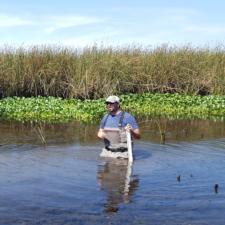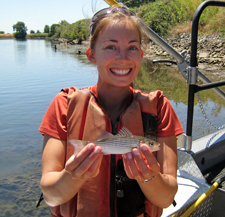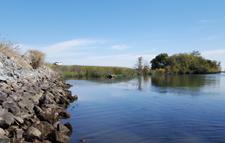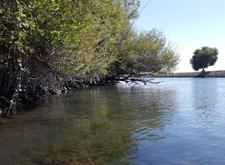Habitat restoration impacts on salmon and water management in California
Summary:
Water management in California is influenced by many factors, including water availability for fish like endangered salmon. Understanding salmon populations is a multi-faceted challenged. For example, the Sacramento-San Joaquin Delta is a highly impacted system where both human habitat alterations such as dams and levees, as well as non-native predacious fishes, likely effect native juvenile salmon. This project examined the interplay between altered habitat and predatory fish, and how they ultimately impact salmon populations.
Investigator:
Eric Palkovacs
Associate Professor
Department of Ecology and Evolutionary Biology
University of California, Santa Cruz
Project description:
A key component of water management in California is addressing flows for fish. For example, California salmon populations are in decline and listed under the Endangered Species Act, which influences water management.
Many juvenile salmon die during their migration through the Sacramento-San Joaquin Delta to the sea. This high mortality is partially attributed to predation by nonnative predators, like striped bass (Morone saxatilis), however salmon also pass through many human-altered habitats including dams and levees.
Research indicates that habitat can influence predator and prey behaviors and physiology, which ultimately affects how many of a prey species get consumed by predators. To develop management strategies that improve salmon survival in the delta, it is important to understand how habitat influences these predator-prey interactions.
This study explored interactions between native juvenile salmon and nonnative striped bass on the Lower Mokelumne River, California. The specific objectives were to 1) examine how levee habitat and salmon attributes influence predation rates, 2) estimate the population-level impact of striped bass predation on emigrating juvenile salmon, and 3) develop a model to assess increases in salmon survival under different management scenarios.
The restoration of salmon populations is an important factor shaping water management decisions in California. This project examined a combination of factors that may lead to high juvenile salmon mortality. Identifying management actions that can reduce this mortality can help produce salmon populations that are more resilient to variation in water quality and quantity.




